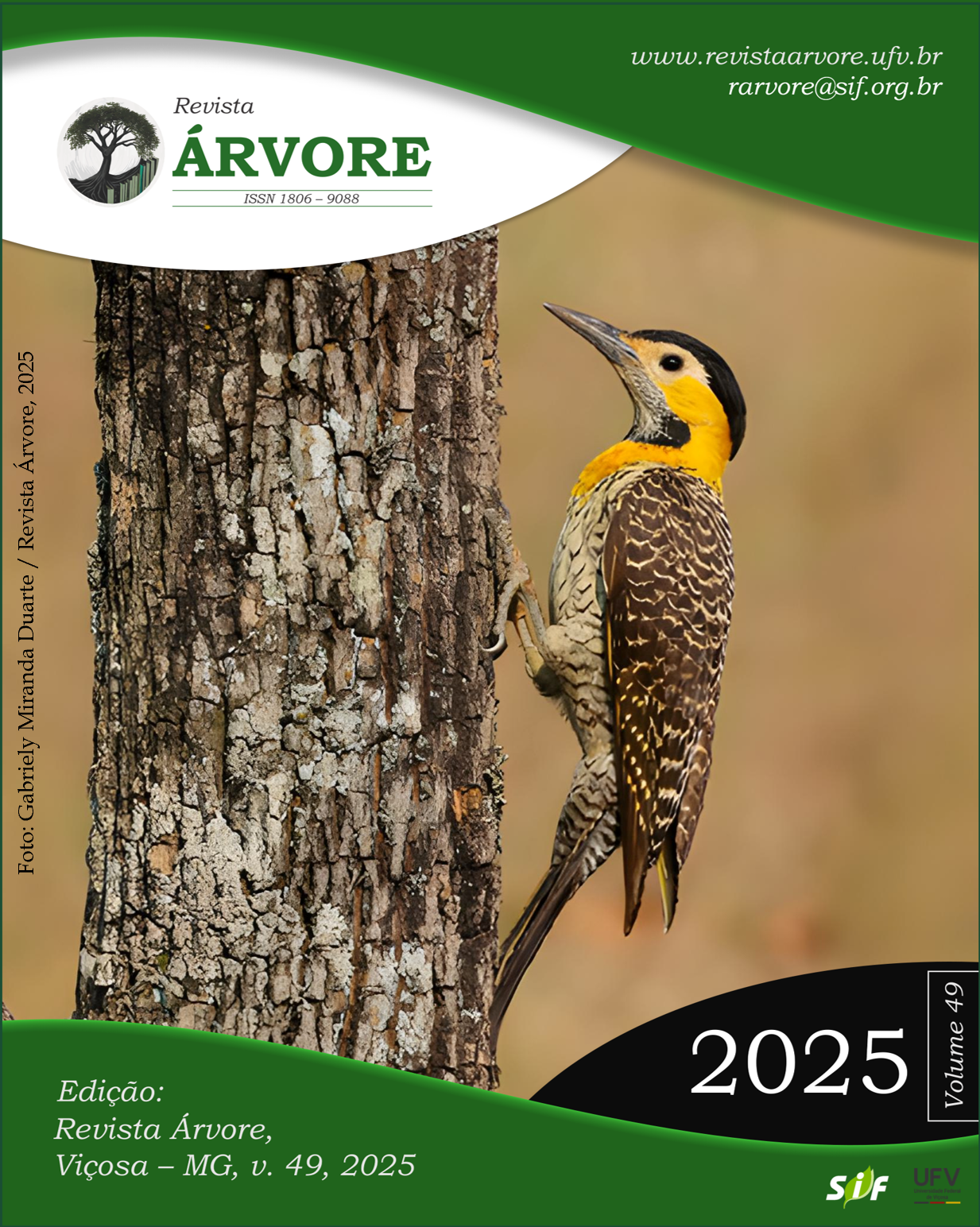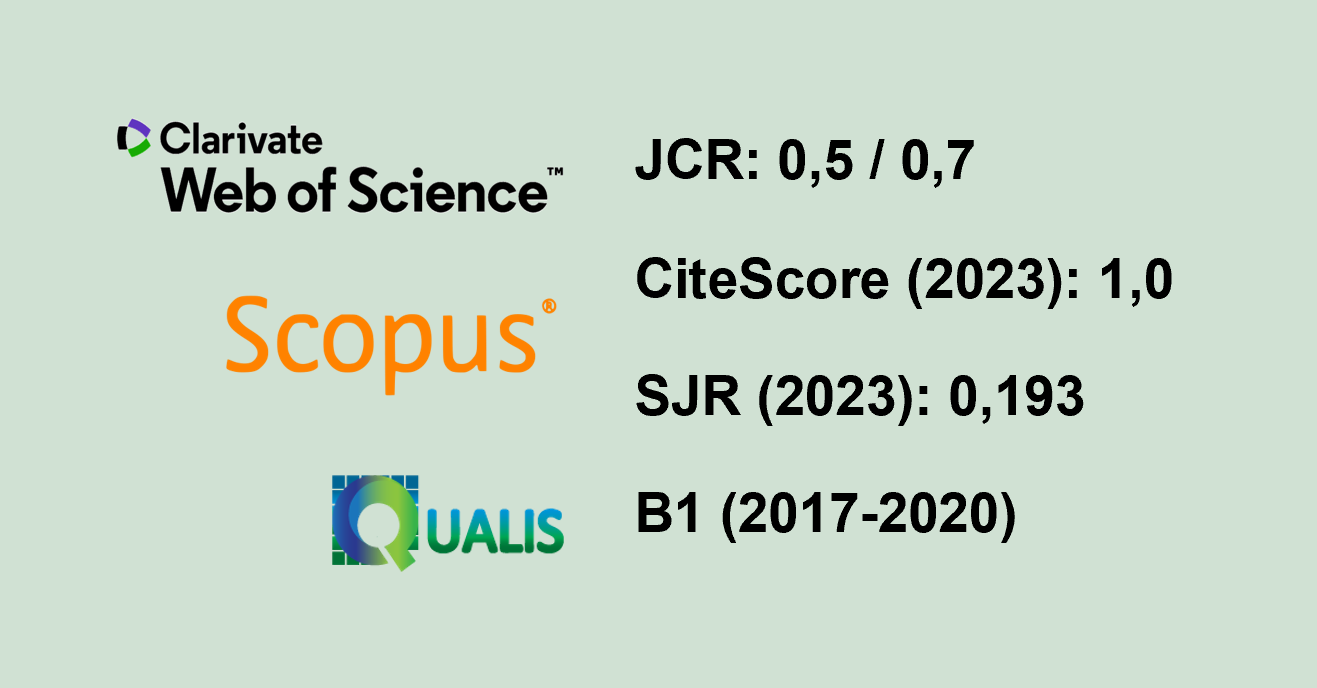Growth and production of Eucalyptus clones in silvopastoral system
DOI:
https://doi.org/10.53661/1806-9088202549263875Keywords:
Forest modeling, Productivity capacity, Crop-livestock-forest integrationAbstract
The aim of this study was to analyze the growth and production of two eucalypt clones grown in a silvopastoral system in the municipality of Coronel Pacheco, MG, Brazil and select the best volumetric model for the clones in this arrangement. This silvopastoral system is composed of two commercial eucalypt hybrids, GG100 and I144 (Eucalyptus urophylla x Eucalyptus grandis), at 79 months of age, planted at a spacing of 14.0 x 2.8 meters, Urochloa decumbens as forage component and grazing by Brangus cattle. A completely randomized design with two treatments (clones) and six replicates (plots) was used. The diameter with bark of all trees in the plots and the total height of the first ten trees were measured, along with a rigorous volume determination of five trees per diameter class to obtain volumetric production and fit the growth and production model. Forest inventory measurements were taken on six occasions from 21 to 79 months of age. The Spurr (1952) model showed a high quality of fit and adjusted coefficient of determination and low residual standard error. The I144 clone showed a larger diameter and higher productivity compared to GG100 clone. And also, higher wood volume and average annual increment (AAI). Both clones showed a high potential to adapt to the region environment, however, I144 clone was the most suitable for use in silvopastoral systems under similar conditions to the study.
Keywords: Forest modeling; Productivity capacity; Crop-livestock-forest integration
Downloads
Published
How to Cite
Issue
Section
License
Copyright (c) 2025 Revista Árvore

This work is licensed under a Creative Commons Attribution 4.0 International License.
All authors agreed to submit the work to Revista Árvore and granted the exclusive license to publish the article. The authors affirm that it is an original work and has not been previously published elsewhere. The scientific content and opinions expressed in the article are the sole responsibility of the authors and reflect their opinions, not necessarily representing the opinions of the editorial board of Revista Árvore or of the Society of Forest Investigations (SIF).
Funding data
-
Coordenação de Aperfeiçoamento de Pessoal de Nível Superior
Grant numbers 001








